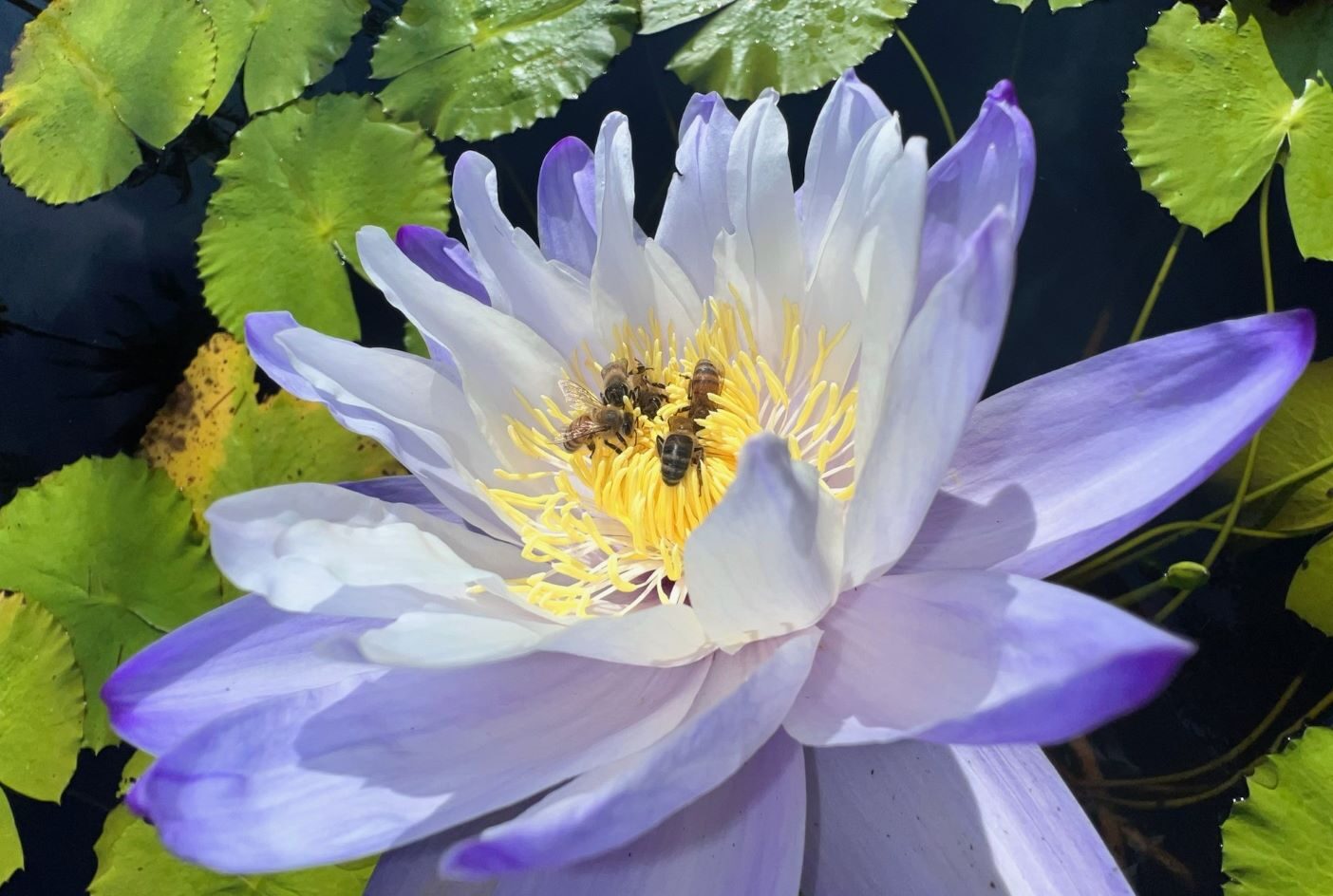
The state of Florida is home to over 7,800 freshwater lakes, 1,700 streams and rivers, 1,000 springs, and 11 million acres of natural wetlands. While our beaches speak for themselves, it is safe to say Florida would not be Florida without its fresh water.
Waterlilies play a critical role in stabilizing our fresh waterways, which in turn impact our beaches. The visual beauty of waterlilies can be noted from afar as the pads gently rest on the surface and the vivid flowers sprout from their aquatic home.
Yet these pretty flowers do more than fill our Instagram feeds. They are workhorses in our local ecosystem, aiding in pollination and water filtration.
Save the bees!
By now most of us have become accustomed with the phrase “save the bees!” with a growing public push to plant native flowers to feed honeybees and bumblebees. Waterlilies not only provide nutrition to the more commonly known bees, but they also nourish the lesser-known native pollinators. They’re drawn to the waterlilies’ brightly colored blooms.
Researchers at the University of Florida found that flower colors such as yellow, white, and blue-purple are especially attractive to wild native pollinators.
The native American white waterlily (Nymphaea odorata) is a waterlily with white petals and a yellow stamen, or center, and its fellow native, the banana waterlily (Nymphaea Mexicana), boasts a bold yellow flower as they work to feed our native beetles, butterflies, and bees.

The waterways
A major issue that has risen to the forefront regarding Florida waters is the matter of eutrophication, a nutrient imbalance that disrupts the harmony of our environment. This generally occurs when excess fertilizer runs into waterways. The nutrients in fertilizer, namely nitrogen and phosphorus, feed algal blooms such as red tide in the Gulf of Mexico, impacting both wildlife and human health.
The algal overgrowth also physically blocks sunlight from reaching underwater vegetation. The lack of light, combined with other factors, creates what’s known as “hypoxic zones,” or expanses of water that lack oxygen.
Unfortunately, algae overgrowth is a regular occurrence on Florida’s west coast. However, waterlilies can help to save the day! Although they cannot act as a singular remedy, having waterlilies in our fresh waterways will help keep our water clean as the aquatic plants work to absorb much of the excessive chemical run-offs — replacing the unwanted algae with vibrant flowers! These, of course, are the same flowers that support our native pollinators.

Join us for Waterlily Weekend, September 2 – 3, as we explore waterlilies around the world and their function within our waterways. Included with Garden admission, free for Members.

About the Authors
DJ Foster is the Aquatic Areas Manager and owner of The Root Flower

Eleanor Zelek is a water gardener and former educator who enjoys the Florida outdoors.

